Problems Involving All Directions Turning





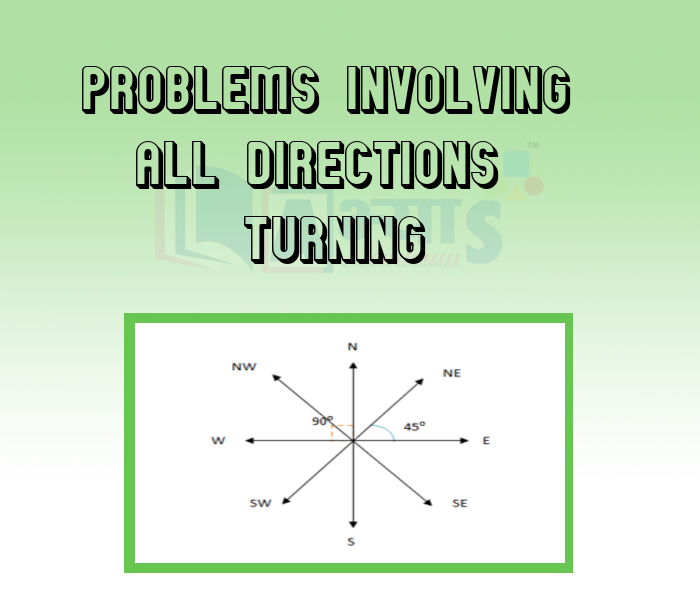
Problems Involving All Directions Turning
Direction Question: This section of verbal reasoning revolves around the various directions. It consist of questions involving all sort of direction puzzle. Candidate is required to make a successive follow-up of directions and ascertain the final direction or the distance between two points. The test is meant to judge the candidate,s ability to trace and follow correctly and sense the directions correctly.
Directions: There are four basic directions North N, South S, East E, West W and four cardinal directions North East NE, North West NW, South East SE, South West SW to help the candidates know the directions. The figure shows all the directions
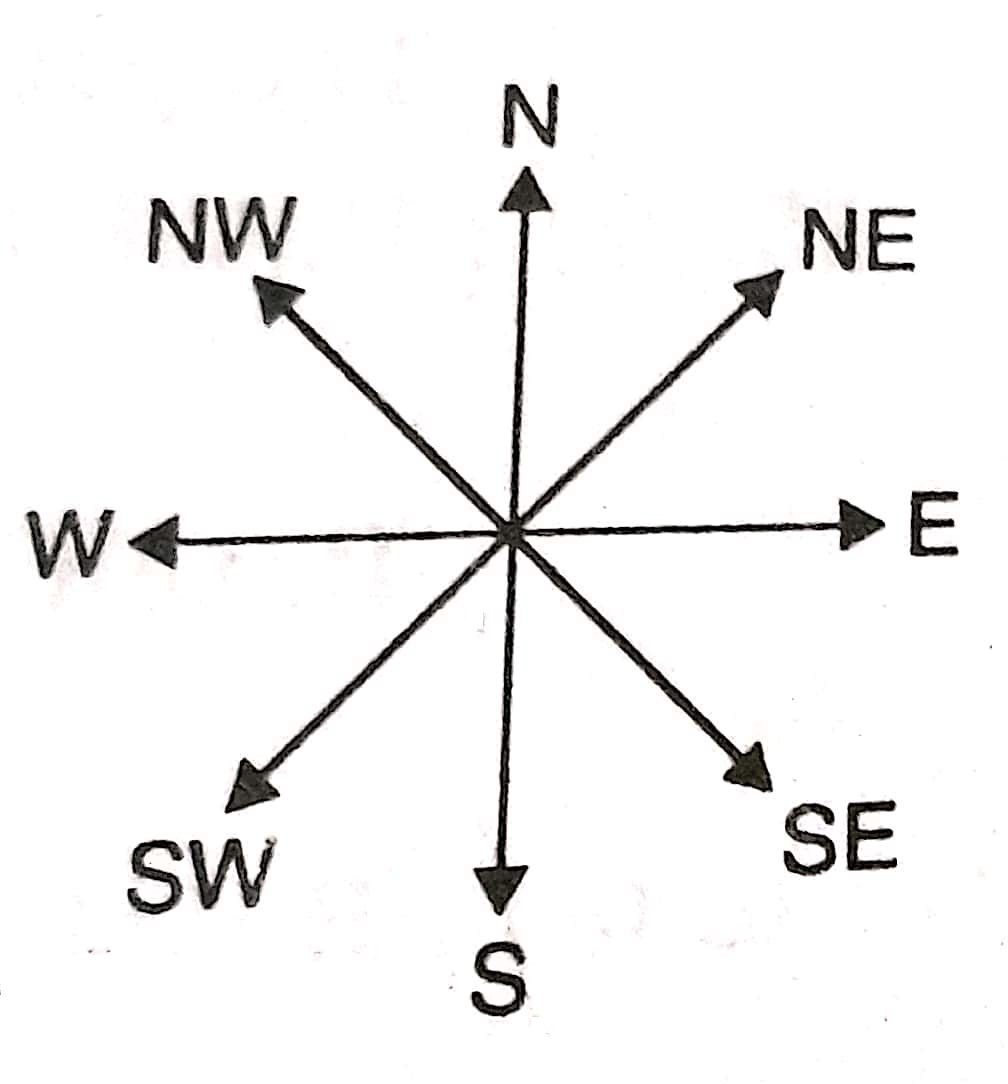
Problems Involving All Directions: These type of questions are solved by taking the right and left movement of a person is always with reference to the body moving in the scenario. It is not with respect to the person who is solving the questions.A diagram is drawn showing the movement of the object. On analysing the diagram the candidate reaches the desired result
Illustration: If you are facing north-east and move 10 m forward, turn left and move 7.5 m, then you are
A. North of your initial position B. South of your initial position C. East of your initial position D. 12 m from your initial position.
Answer: A
Solution: Clearly, the narrator starts from A, moves towards north-east a distance of 10 m and reaches B, turns left ( anti-clockwise ) and moves 7.5 m and reaches C.
Clearly, C lies to the north of A.
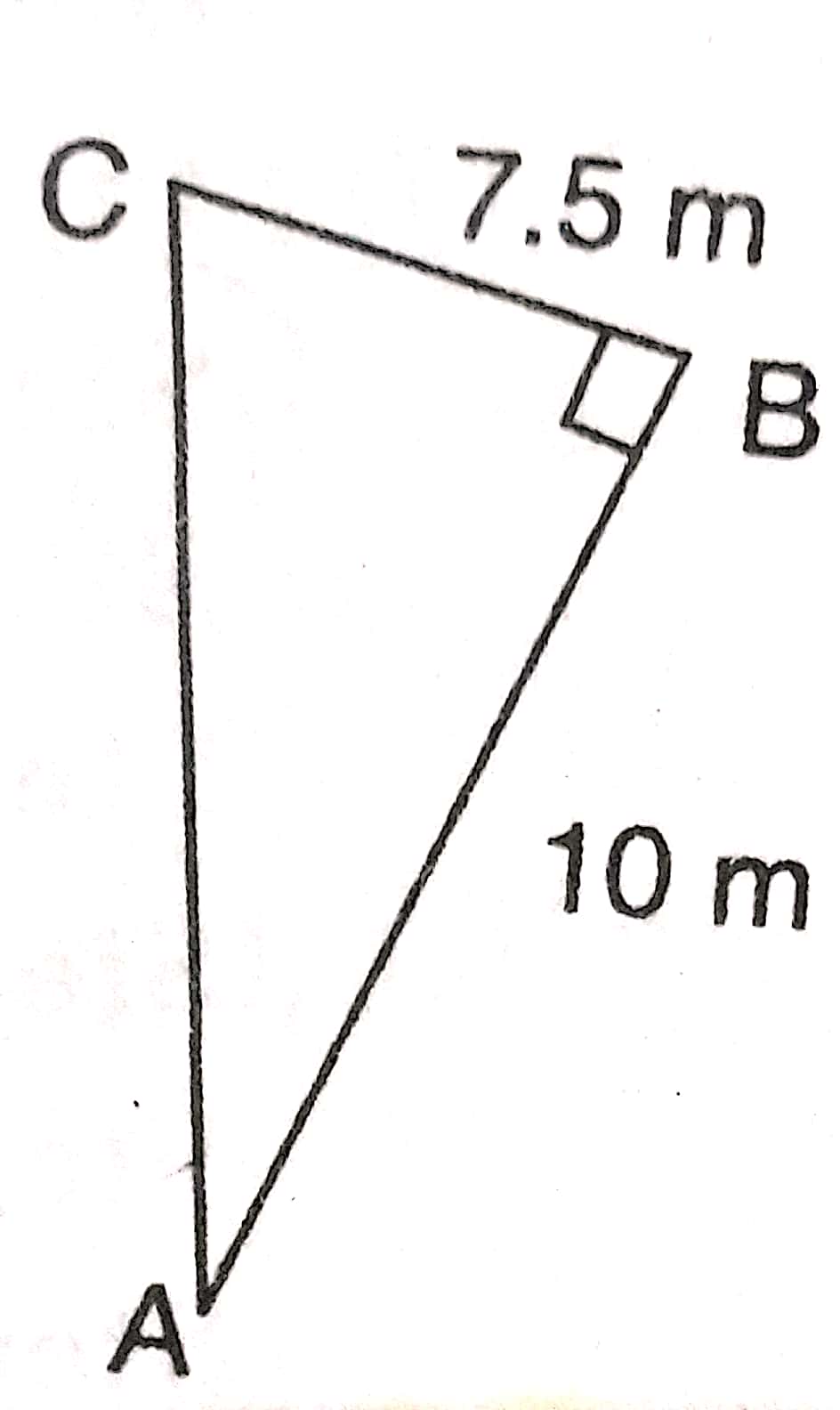
Also, ABC is right-angled at B. So by Pythagoras Theorem
So,
= 100 + 56.25 = 156.25.
Thus, the narrator is 12.5 m to the north of his initial position. Hence option A is correct.
Illustration: A person starts from a point A and travels 3 km eastwards to B and then turns left and travels thrice that distance to reach C. He again turns left and travels five times the distance he covered between A and B and reaches his destination D. The shortest distance between the starting point and the destination is
A. 12 km B. 15 km C. 16 km D. 18 km
Answer: B
Solution: The movements of the person are as shown in fig.
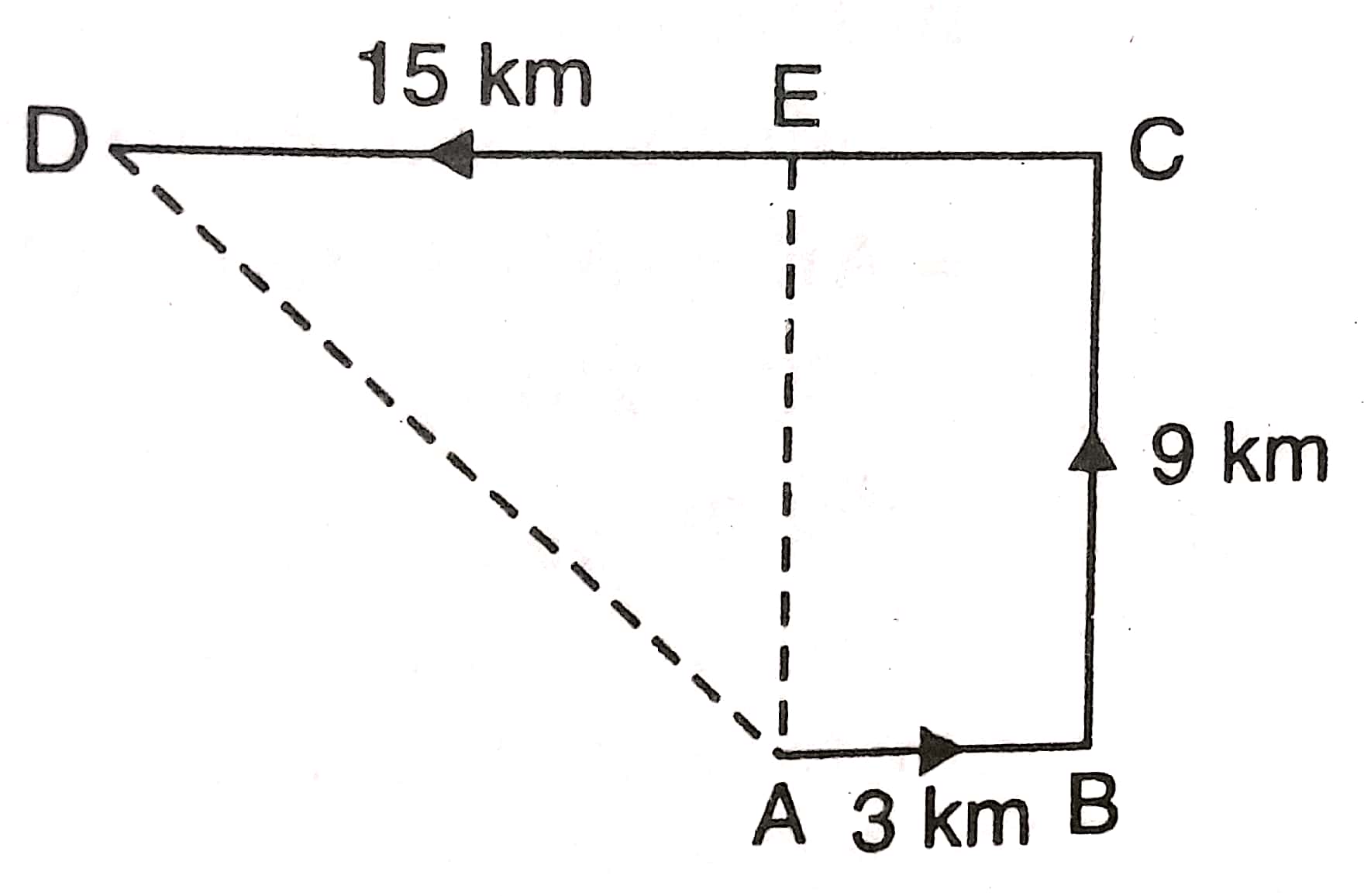
Clearly, AB = 3 km,
BC = 3AB = (3 3) km = 9 km,
CD = 5AB = (5 3) km = 15 km.
Draw AE CD.
Then, CE = AB = 3 km and AE = BC = 9 km.
DE = (CD - CE) = (15 - 3) km = 12 km.
In AED,
=
+
AD =
km
= Km
= km = 15 km.
Required distance = AD = 15 km
Hence the correct option is B
Kailash faces towards north turning to his right , he walks 25 metres. He then turns to his left and walks 30 metres . next he moves 25 metres to his right . he then turns to his rights again and walks 55 metres . finally, he turns to the right and moves 40 meters . In which direction is he now from starting point ? | |||
| Right Option : C | |||
| View Explanation | |||
One morning, Ram started to walk towards the Sun. After covering some distance he turned to the left, then again to the right and after covering some distance he again turn to the left. Now, in which direction is he facing ? | |||
| Right Option : C | |||
| View Explanation | |||
Sanjeev walks to 10 metres towards the South. Turning to the left, he walks 20 metres and then moves to his right. After moving a distance of 20 metres, he turns to the right and walks 20 metres. Finally, he turns to the right and moves a distance of 10 metres. How far and in which direction is he from the starting point? | |||
| Right Option : B | |||
| View Explanation | |||
Students / Parents Reviews [20]
I have spent a wonderful time in Abhyas academy. It has made my reasoning more apt, English more stronger and Maths an interesting subject for me. It has given me a habbit of self studying

Yatharthi Sharma
10thAbhyas Methodology is very good. It is based on according to student and each child manages accordingly to its properly. Methodology has improved the abilities of students to shine them in future.

Manish Kumar
10thIt was good as the experience because as we had come here we had been improved in a such envirnment created here.Extra is taught which is beneficial for future.

Eshan Arora
8thAbhyas is a complete education Institute. Here extreme care is taken by teacher with the help of regular exam. Extra classes also conducted by the institute, if the student is weak.

Om Umang
10thUsually we see institutes offering objective based learning which usually causes a lag behind in subjective examinations which is the pattern followed by schools. I think it is really a work of planning to make us students grab the advantages of modes of examination, Objective Subjective and Onli...

Anika Saxena
8thWe started with lot of hope that Abhyas will help in better understnding of complex topics of highers classes. we are not disappointed with the progress our child has made after attending Abhyas. Though need to mention that we expected a lot more. On a scale of 1-10, we would give may be 7.
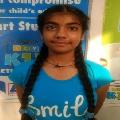
Manya
8thIn terms of methodology I want to say that institute provides expert guidence and results oriented monitering supplements by requsite study material along with regular tests which help the students to improve their education skills.The techniques of providing education helps the students to asses...

Aman Kumar Shrivastava
10thMy experience with Abhyas academy is very nice or it can be said wonderful. I have been studying here from seven class. I have been completing my journey of three years. I am tinking that I should join Abhyas Academy in tenth class as I am seeing much improvement in Maths and English

Hridey Preet
9thThe experience was nice. I studied here for three years and saw a tremendous change in myself. I started liking subjects like English and SST which earlier I ran from. Extra knowledge gave me confidence to overcome competitive exams. One of the best institutes for secondary education.

Aman Kumar Shrivastava
10thIt has a great methodology. Students here can get analysis to their test quickly.We can learn easily through PPTs and the testing methods are good. We know that where we have to practice

Barkha Arora
10thAbhyas institute is one of the best coaching institute in the vicinity of Ambala cantt.The institute provides good and quality education to the students.The teachers are well experienced and are very helpful in solving the problems. The major advantages of the institute is extra classes for weak...

Shreya Shrivastava
8thAbhyas academy is great place to learn. I have learnt a lot here they have finished my fear of not answering.It has created a habit of self studying in me.The teachers here are very supportive and helpful. Earlier my maths and science was good but now it has been much better than before.

Barkha Arora
10thMy experience with Abhyas Academy has been very good. When I was not in Abhyas whenever teacher ask questions I could not speak it confidently but when I came in Abhyas, my speaking skills developed and now I am the first one to give the answer of teachers question.

Upmanyu Sharma
7thA marvelous experience with Abhyas. I am glad to share that my ward has achieved more than enough at the Ambala ABHYAS centre. Years have passed on and more and more he has gained. May the centre flourish and develop day by day by the grace of God.

Archit Segal
7thMy experience with Abhyas academy is very good. I did not think that my every subject coming here will be so strong. The main thing is that the online tests had made me learn here more things.

Hiya Gupta
8thAbout Abhyas metholodology the teachers are very nice and hardworking toward students.The Centre Head Mrs Anu Sethi is also a brilliant teacher.Abhyas has taught me how to overcome problems and has always taken my doubts and suppoeted me.

Shreya Shrivastava
8thIt was a good experience with Abhyas Academy. I even faced problems in starting but slowly and steadily overcomed. Especially reasoning classes helped me a lot.

Cheshta
10thAbhyas institute is one of the best coaching institute in the vicinity of Ambala Cantt area. The teachers of the institute are well experienced and very helpful in solving the problems of the students.The good thing of the institute is that it is providing extra classes for the students who are w...

Aman Kumar Shrivastava
10thThird consective year,my ward is in Abhyas with nice experience of admin and transport support.Educational standard of the institute recumbent at satisfactory level. One thing would live to bring in notice that last year study books was distributed after half of the session was over,though study ...

Ayan Ghosh
8thMy experience was very good with Abhyas academy. I am studying here from 6th class and I am satisfied by its results in my life. I improved a lot here ahead of school syllabus.
